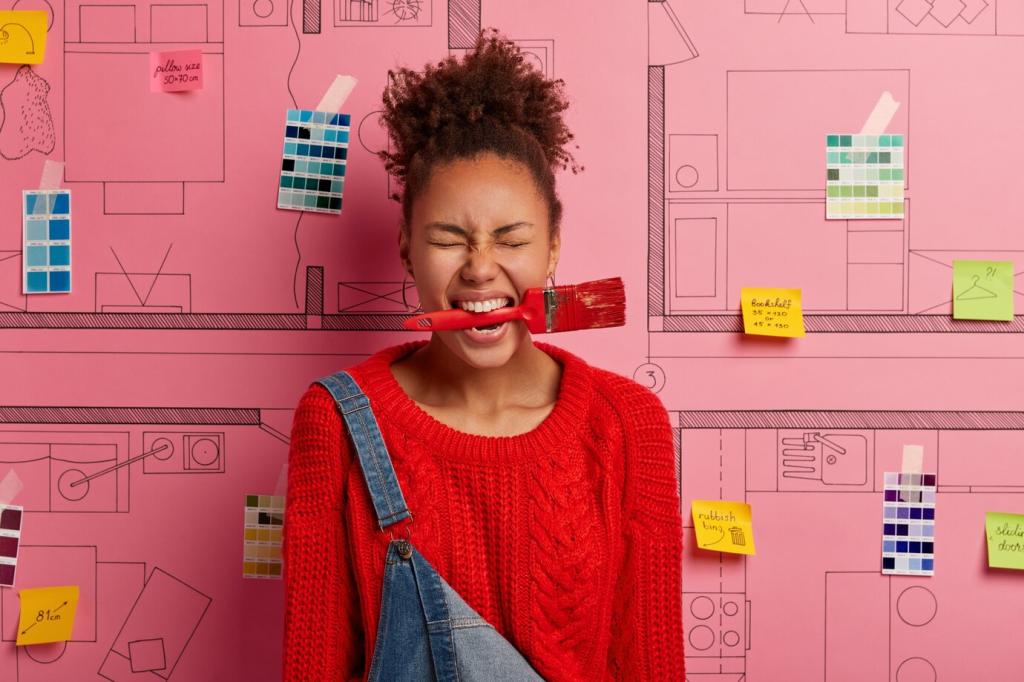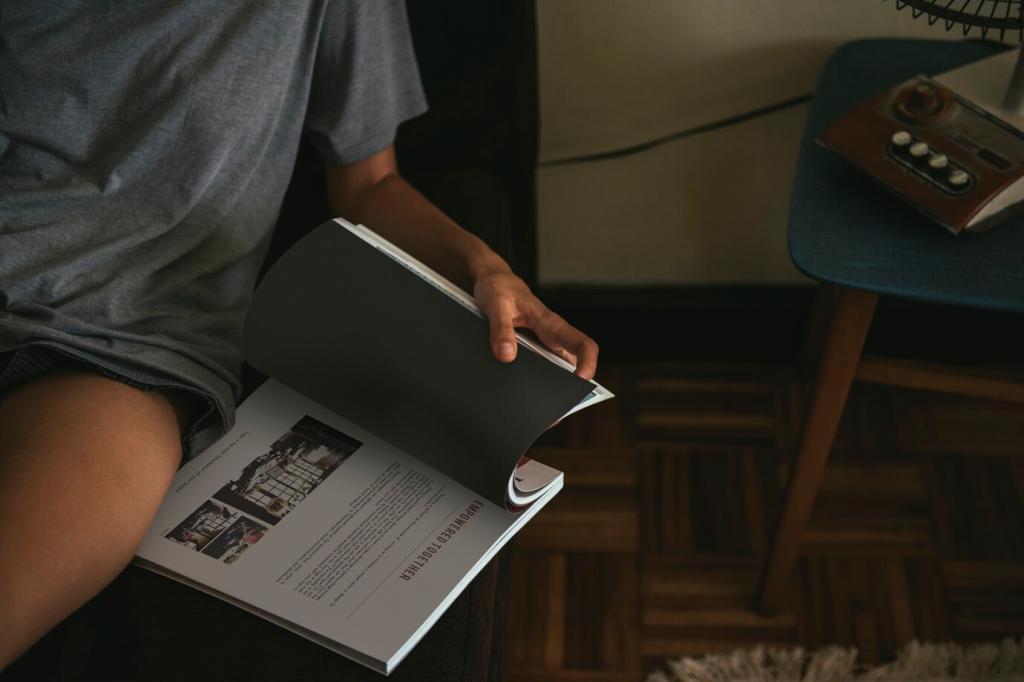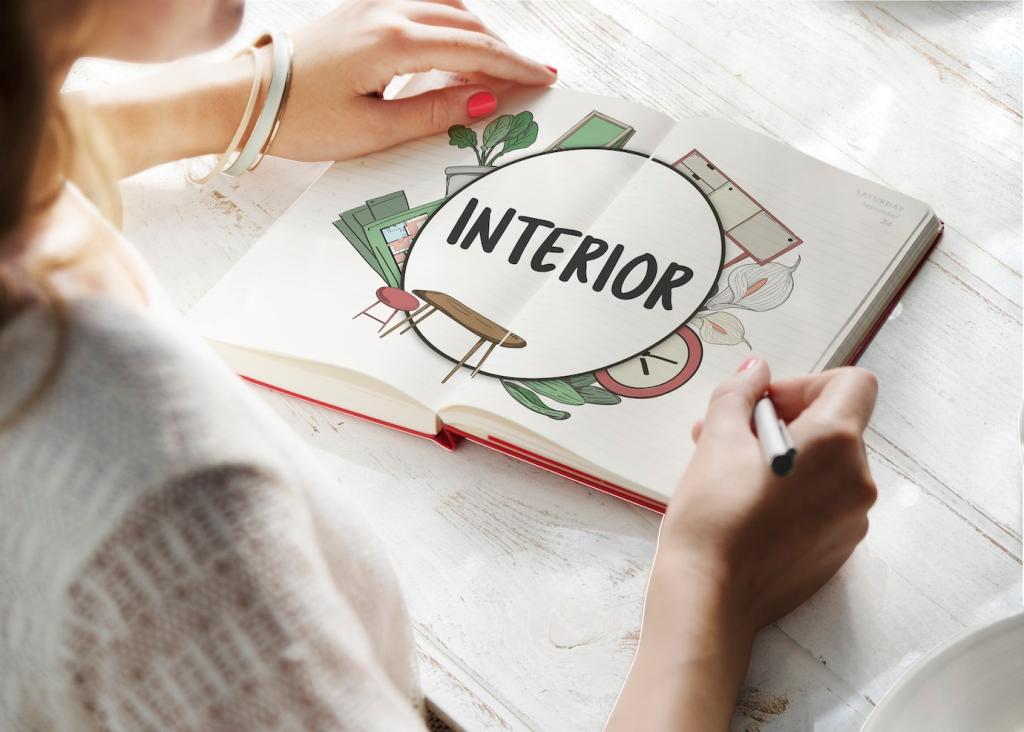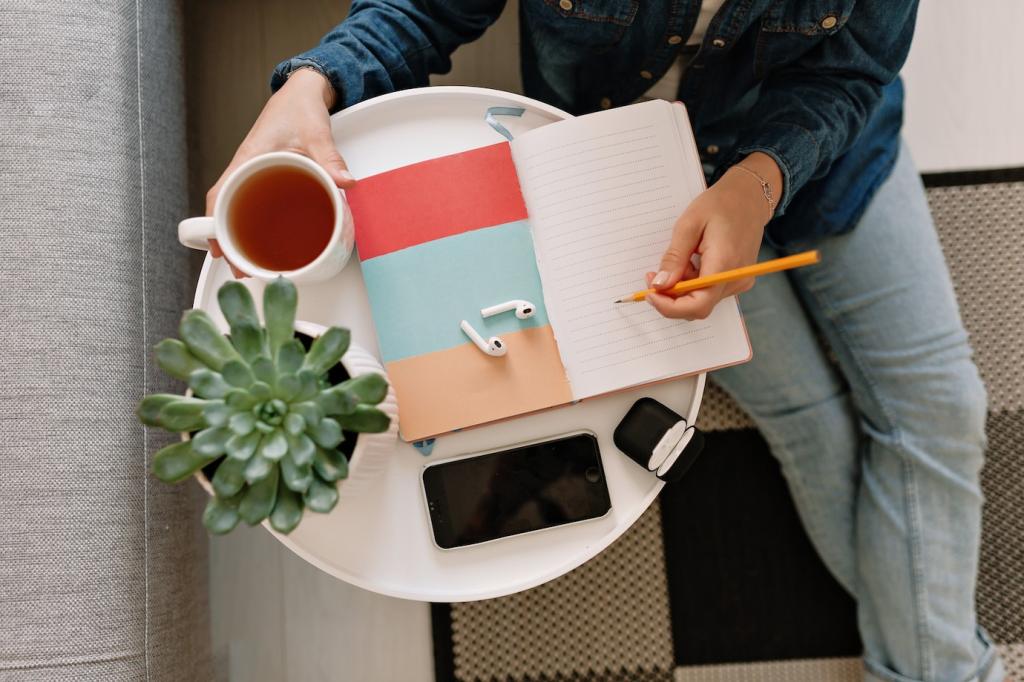Using Color to Tell a Room’s Story
Chosen theme: Using Color to Tell a Room’s Story. Step into a home where every hue speaks, every tone whispers backstory, and every accent line guides the plot. Explore how color can turn four walls into a living narrative you’ll want to share.

Emotions Before Swatches
Ask how you want to feel in the space—calmed, energized, grounded, or curious. Naming the emotion first prevents aimless sampling and keeps your palette aligned with the room’s deeper story.

Character, Setting, Plot
Treat the room like fiction: character is your lifestyle, setting is the architecture, and plot is how the space is used. Choose colors that honor each element, so the story never feels forced.

The Anchor Object as Prologue
Find a meaningful piece—an heirloom rug, a travel print, or a handmade vase—that sets the prologue. Pull two to three colors from it to frame the narrative and invite consistency across details.




Light as Editor: How Illumination Rewrites Color
Test samples on all walls and watch them from sunrise to night. A gray that looks serene at noon may turn stormy by dusk; let these shifts guide your final, most honest draft.
Light as Editor: How Illumination Rewrites Color
Choose bulbs with a high Color Rendering Index to keep hues truthful. Warm bulbs cozy up terracotta and creams, while cooler temperatures sharpen blues and greens. Your editor’s note: accuracy matters.

Material Matters: One Hue, Many Voices
Navy velvet reads opulent and nocturnal, while navy linen feels breezy and salt-air casual. Keep your color story coherent by repeating a hue across varied materials, letting texture add nuance instead of noise.

Pattern as Punctuation
Stripes bring pacing, florals add lyricism, and geometrics deliver structure. Use patterns to punctuate your narrative—commas for pause, exclamation points for emphasis—so the eye travels with intention, not confusion.

Natural Elements as Subtext
Stone, rattan, and warm woods ground saturated palettes with earthy subtext. Their quiet undertones keep jewel tones believable and pastels substantial, supporting the plot without stealing the scene.
Meaning and Memory: The Psychology Behind Your Palette
Consider colors that mark your milestones—the blue of a childhood door, the ochre from a favorite café. Weave them softly into trims or textiles to transform nostalgia into living narrative.


Meaning and Memory: The Psychology Behind Your Palette
Research symbolic meanings before borrowing motifs or palettes. Respectful choices deepen authenticity, ensuring your home’s color story celebrates influences rather than diluting or misrepresenting them.


Flow and Zoning: Directing Movement with Hue
Mark transitions with a shift in saturation or temperature. A cooler foyer can expand into warmer living spaces, signaling welcome and drawing guests deeper into the narrative arc.
Flow and Zoning: Directing Movement with Hue
Define activity zones with related tones—muted green for focus, sun-washed coral for conversation, soft charcoal for media. Rugs, art, and painted niches reinforce boundaries without building walls.

